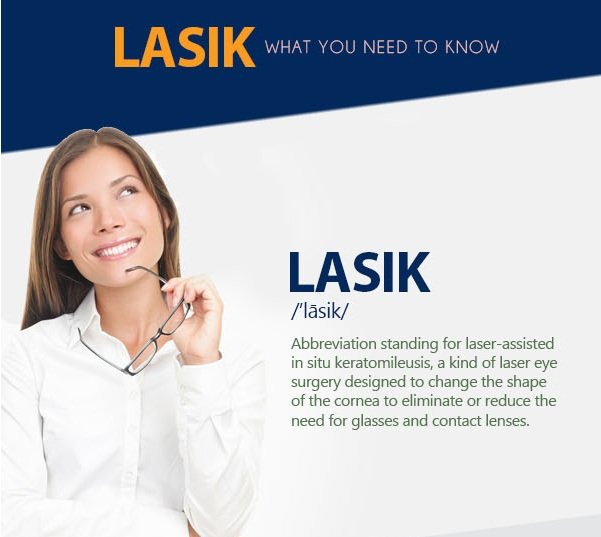What Are The Differences And Resemblances In Between SMILE Eye Surgical Treatment And LASIK And PRK?
What Are The Differences And Resemblances In Between SMILE Eye Surgical Treatment And LASIK And PRK?
Blog Article
Staff Author-Adler Vincent
If you have actually been considering SMILE eye surgery, you could ask yourself how it compares to LASIK and PRK. Each treatment has its own collection of benefits and factors to consider. From quicker recovery times to prospective threats, there are vital differences you need to know prior to choosing. Recognizing these differences will help you make an educated selection that lines up with your particular needs and assumptions. Interested to recognize more about just how these procedures compare carefully? Keep discovering to get a comprehensive understanding of SMILE, LASIK, and PRK.
SMILE Eye Surgical Procedure Summary
If you're considering SMILE eye surgical treatment, you'll discover it to be a minimally invasive treatment with a fast healing time. During SMILE (Little Cut Lenticule Extraction), a laser is used to develop a tiny, exact incision in the cornea to get rid of a small item of cells, reshaping it to remedy your vision. This differs from LASIK, where a flap is created, and PRK, where the outer layer of the cornea is entirely removed.
One of the key advantages of SMILE is its minimally intrusive nature, leading to a faster healing process and less discomfort post-surgery. look at here for SMILE is fairly fast, with many individuals experiencing enhanced vision within a day or 2. This makes it a prominent option for those looking for a convenient and efficient vision improvement procedure. In addition, SMILE has been shown to have a reduced danger of dry eye disorder compared to LASIK, making it a beneficial choice for individuals worried concerning this possible side effect.
Distinctions Between SMILE, LASIK, and PRK
When comparing SMILE, LASIK, and PRK eye surgical procedures, it is essential to comprehend the unique methods made use of in each treatment for vision correction.
SMILE (Little Laceration Lenticule Extraction) is a minimally invasive procedure that involves creating a tiny incision to remove a lenticule from the cornea, improving it to fix vision.
LASIK (Laser-Assisted In Situ Keratomileusis) entails creating a thin flap on the cornea, making use of a laser to improve the underlying cells, and afterwards repositioning the flap.
PRK (Photorefractive Keratectomy) gets rid of the outer layer of the cornea before reshaping the tissue with a laser.
The major difference depends on the way the cornea is accessed and treated. Bladeless LASIK is flapless, making it a great choice for people with thin corneas or those associated with get in touch with sports. LASIK offers fast aesthetic recuperation as a result of the flap production, yet it may posture a higher threat of flap-related issues. PRK, although having a much longer healing duration, prevents flap-related concerns completely.
Recognizing these differences is critical in selecting the most appropriate treatment for your vision modification needs.
Pros and Cons Comparison
To evaluate the advantages and disadvantages of SMILE, LASIK, and PRK eye surgical procedures, it's necessary to take into consideration the details advantages and possible limitations of each procedure. SMILE surgery provides the benefit of a minimally invasive procedure, with a smaller laceration and possibly quicker recovery time contrasted to LASIK and PRK. It also decreases the risk of dry eye post-surgery, a common adverse effects of LASIK. Nonetheless, SMILE may have limitations in treating higher degrees of myopia or astigmatism compared to LASIK.
LASIK surgery provides quick visual recovery and minimal pain during the procedure. It's extremely efficient in treating a wide variety of refractive mistakes, including nearsightedness, hyperopia, and astigmatism. Yet, LASIK carries a threat of flap issues, which can impact the corneal structure.
PRK eye surgery, while not as popular as LASIK, stays clear of producing a corneal flap, decreasing the risk of flap-related problems. It appropriates for individuals with slim corneas or irregular corneal surfaces. Nevertheless, PRK has a much longer recuperation time and may include much more discomfort during the healing process.
Final thought
So, when it pertains to selecting in between SMILE, LASIK, and PRK, think about it like picking the best set of shoes. Learn Alot more is like a streamlined, comfortable pair of tennis shoes - fast and simple.
LASIK is a lot more like stylish high heels - fancy and quick, but with some possible risks.
PRK resembles strong treking boots - reputable and durable, but calling for a bit even more effort and time.
Inevitably, the most effective option depends upon your individual needs and choices.
